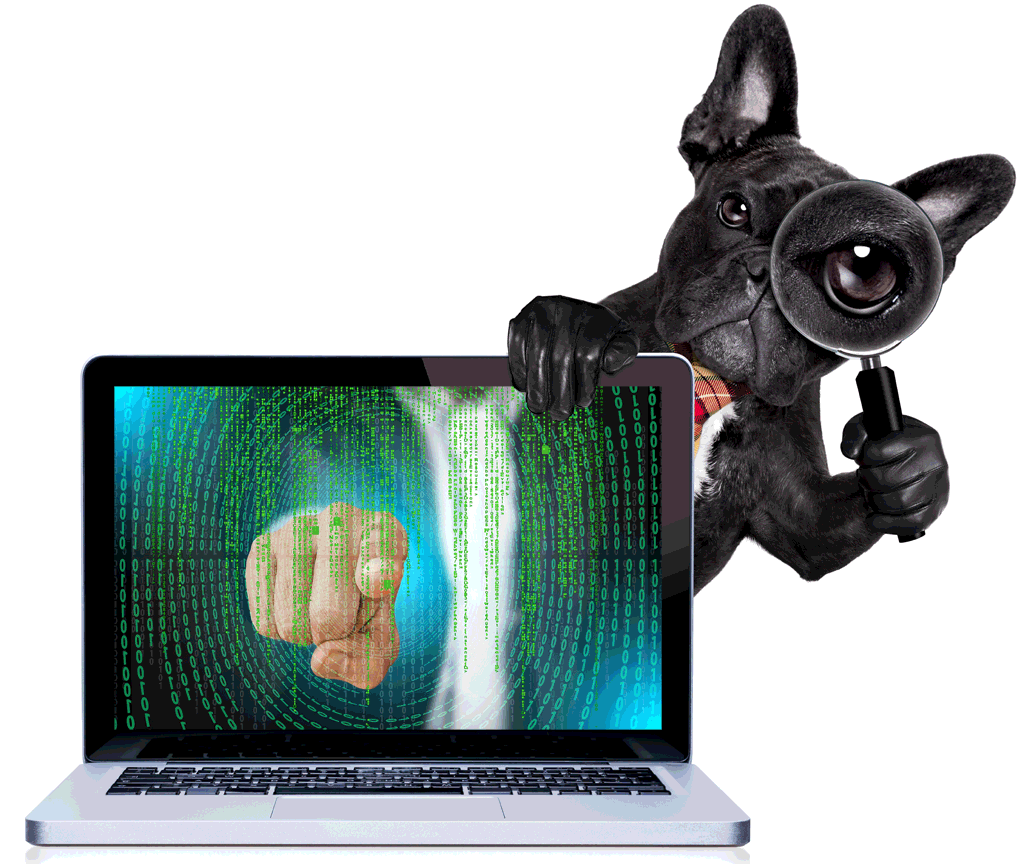If you are the owner of a pet grooming business you may think that cybersecurity does not affect you. However, if you are using the internet, pet grooming software and/or social media for your business and personal affairs, then you need to reconsider.
Preventing malware attacks for your pet grooming business is vital. Even if you run a small pet grooming business from your home, you need to protect all sensitive information about your business, that of your employees and your clients. Could you imagine your computer being locked and held for ransom? How would you run your business?
October is Cybersecurity Awareness Month
Cybersecurity Awareness Month is observed every October, and since its inception in 2004, the Cybersecurity and Infrastructure Agency (CISA) continues to strive in its effort to keep all Americans safer and more secure online.
In 2020, CISA aims at increasing awareness in a campaign called “Do Your Part. #BeCyberSmart.” Awareness and the implementation of security measures ensure the safety of all internet users.
Why you need to protect your pet grooming business and personal information from security threats
As a pet groomer, you offer a very personalized service for pet owners. You probably use your phone and internet for appointments, but may also be using social media to communicate with your pet owner clients. Social media is also an important tool for the marketing of your businesses and it helps you reach out to current and potential new clients.
Through your appointment systems, you handle sensitive client information, including their telephone numbers, addresses, pets’ names, and types of pets each client has. You also need to keep a record of your suppliers, banking details, accounting, and other personal information. All this information is very important for every pet grooming business, but it is also vulnerable to prying eyes in the form of cyber-attacks.
Accounting is an important part of your pet grooming business, even if you are not using specific software for your appointments. If you are doing your accounting with Excel or Google Doc spreadsheets, you still need to protect all your business information. The information you keep in the accounting systems of your business is sensitive because you may include social security numbers, bank details, business plans and sensitive client information.
Types of cyber attacks
There are many types of cyber-attacks, but they fall into two categories known as passive or active attacks.
Passive cyber attacks
In a passive attack, the intruder may observe and collect information covertly about your business. This means that as they observe, they are collecting vital information about your business that may not be directly harmful, but the data collected can prove damaging later. Passive attacks are difficult to detect because the attackers are not making an active attempt to steal your information or disrupt your business or personal computing systems.
They observe traffic patterns to your business allowing them to learn who is visiting your website, what files you are downloading and traffic patterns. Some attackers install key-loggers on your computer via malware that can identify keystrokes to reveal user passwords and IDs. Banking Malware will gather your credentials, send that information to the attacker and then they can clear out your bank account.
During a passive attack, they can also “eavesdrop” on your emails, unencrypted communications and scan your devices for vulnerabilities.
Active cyber attacks
In an active attack, the information collected during a passive attack is used. Scammers can also use “technological blunt instruments” in an active attempt to obtain information or modify your data.
Active attacks on your system can cause a denial-of-service attack that can overload services and then deny access to your users (customers). They can also modify messages during their transmission or spoofing, where they send emails with the names of senders you know, or they may make phishing attempts. Other attacks include Ransomware, that will encrypt your computer so it is unusable and can only be decrypted if you pay the ransom.
What is phishing and how to prevent it?
Phishing emails are an attempt to get you to pass on sensitive information to the attackers. They usually appear to have come from a government agency, financial institution, or a trusted business you have accounts with. The email usually asks for personal information, and if you respond to it by providing the information or clicking on a link, the attackers gain access to your accounts. The best way to halt phishing attempts is to:
- Never respond to suspicious emails, because it’s the easiest way for cybercriminals to access your system. Rather call the company that has supposedly sent the email.
- Links in emails and online posts from those you don’t know or phishing attempts are another easy way to access your system, so avoid clicking on them; this includes images.
- Make sure all URLs start with “https.” The “s”signifies that the website you are accessing is secure and encrypts your communications between you and the website.
- As mentioned throughout the article, make sure your passwords are strong, use multi-factor authentication for all websites that support it, install anti-virus software and keep it up to date.
Keeping your pet grooming business secure in 5 simple ways
Cyber-attacks cause significant financial losses to businesses every year. There are some simple tips that you can implement as a pet grooming business owner to keep your data and customers safe.
1. Business information needs to be kept safe
Your business information includes more than your trade and marketing secrets but also includes a whole range of your and your employees’ personal information. These are usually full names, addresses, social security numbers, bank account numbers, etc. This type of information should never be shared over unsecured networks, within emails or with unknown parties. This information should be encrypted where possible and access to files only on a need to know basis.
2. Passwords need to be secured
Passwords are a strong security measure, but they need to be used correctly. Since you are probably using more than one device (smartphone, laptop, printer, etc.) for your business, remember that devices are constantly exchanging data as you work.
Smart devices or “Internet of Things” are geared to connect to the internet and their security needs to be ensured by using strong passwords. These smart devices are within your home or business and connect to the Internet. Imagine a hacker listening on the baby monitor!
Password protocol
- Always change the default password of a new device.
- Always choose the longest password allowed by a device.
- Make your passwords unique and difficult to guess by avoiding common words, your name, and birth date. Consider using a password generator from a password manager.
- If not using a password generator, add punctuation and capitalization to make the password more difficult and make phonetic replacements wherever possible, e.g. replace the “ph” with an “f”, etc.
- Password managers have password generators that can generate random passwords taking the work out of coming up with a password.
- Never give your password to anyone, and be wary of tricksters trying to get it out of you online.
- Each account should have a different password to make it more difficult for cybercriminals to breach them. What happens when one site is breached, the hacker will often use those same credentials to login to other sites. This may sound like a headache because you probably have many things you need passwords for, but using a password manager will ease that headache.
- A password manager is a secure way to store your passwords. You can access this with a master password, and it can retrieve your passwords as you need them. Password managers can also hold other important information, including your credit card numbers, Card Verification Value (CVV), and the answers to security questions.
- Double your login protection by enabling multi-factor authentication if it’s available for the website. A username and password prove you know something. Multi-Factor proves you have possession of something, such as an authenticator app on your phone that generates random codes, which change every minute.
3. Software updates are important
Software updates include the latest bug patches and vulnerability fixes. You must ensure everything you use is always updated, from the software on your computer, including anti-virus software, to your phone, your home/business router, any IOT devices (Smart Devices) and your pet grooming software. If you use Groomsoft Pet Grooming software, we take care of the grooming software updates for you! If you don’t have time to check for updates, make sure that when you install software on any device; you turn the automatic updates on if available.
4. Social media shares your information with the world
As a pet grooming business, you probably have more than one social media account where you share information with your clients. You probably also have personal social media accounts too. Since 49% of the world are now using social networks, there are some simple ways you can protect your business and personal social media accounts.
- The information posted on social media must always be limited. Sensitive business and personal information must not be visible, including full names, home addresses, birthdays, and even vacation plans. Location services should only be enabled for the location of your pet grooming business, but never about your movements.
- Cyberbullying and harassment have become a problem, and an inappropriate post should always be reported and blocked.
- Once something is posted on the Internet, it is hard to take it back. Even posts deleted have probably been seen by someone, so only share items with care.
- Privacy settings must always be updated, and geotagging should be off on your personal social media because it allows people to see your location.
- Only connect both your social media accounts to people you trust.
- Most social media networks have multi-factor authentication; use it. Could you imagine a hacker gaining access to your social media account, changing the password, locking you out and posting profanity for all of your customers to see?
5. General online protection
Besides always making sure you are protected on your WIFI at home or your business, there are also other practices you should adhere to wherever you are:
- Secure connections are always indicated by the “lock” symbol in your web browser’s address bar. If it is missing or has a slash through it; do not enter your login credentials as you may have been directed to a malicious website or the website’s security has been broken and would send your credentials out over the Internet in plain text.
- Avoid using free internet with no encryption.
- If you are on an unsecured public network, such as the coffee shop, don’t be tempted to perform banking tasks or other sensitive activities. Prefer to use your personal hotspot if you must transact.
- Never reveal your sensitive information to unknown sources.
- Always type the URL into the address bar. Never click on links or copy-paste from suspicious emails.
A final word on identity theft and internet scams
Internet scams are on the rise and impostors use Phishing emails the most to try to gather your sensitive information. Phishing emails often look like established companies and/or related to current events.
A cyberattack need not always be from a hacking attempt into the whole infrastructure of your pet grooming business. Most data breaches are caused by just one phishing attempt, accidental exposure or a single vulnerability.
Make sure to always keep your passwords safe, use a password manager, use multi-factor authentication if available and be wary of attempts to get you to click on unknown links.
Finally keep all your devices and their software up to date; including your pet grooming business software, that is if you’re not using Groomsoft.

